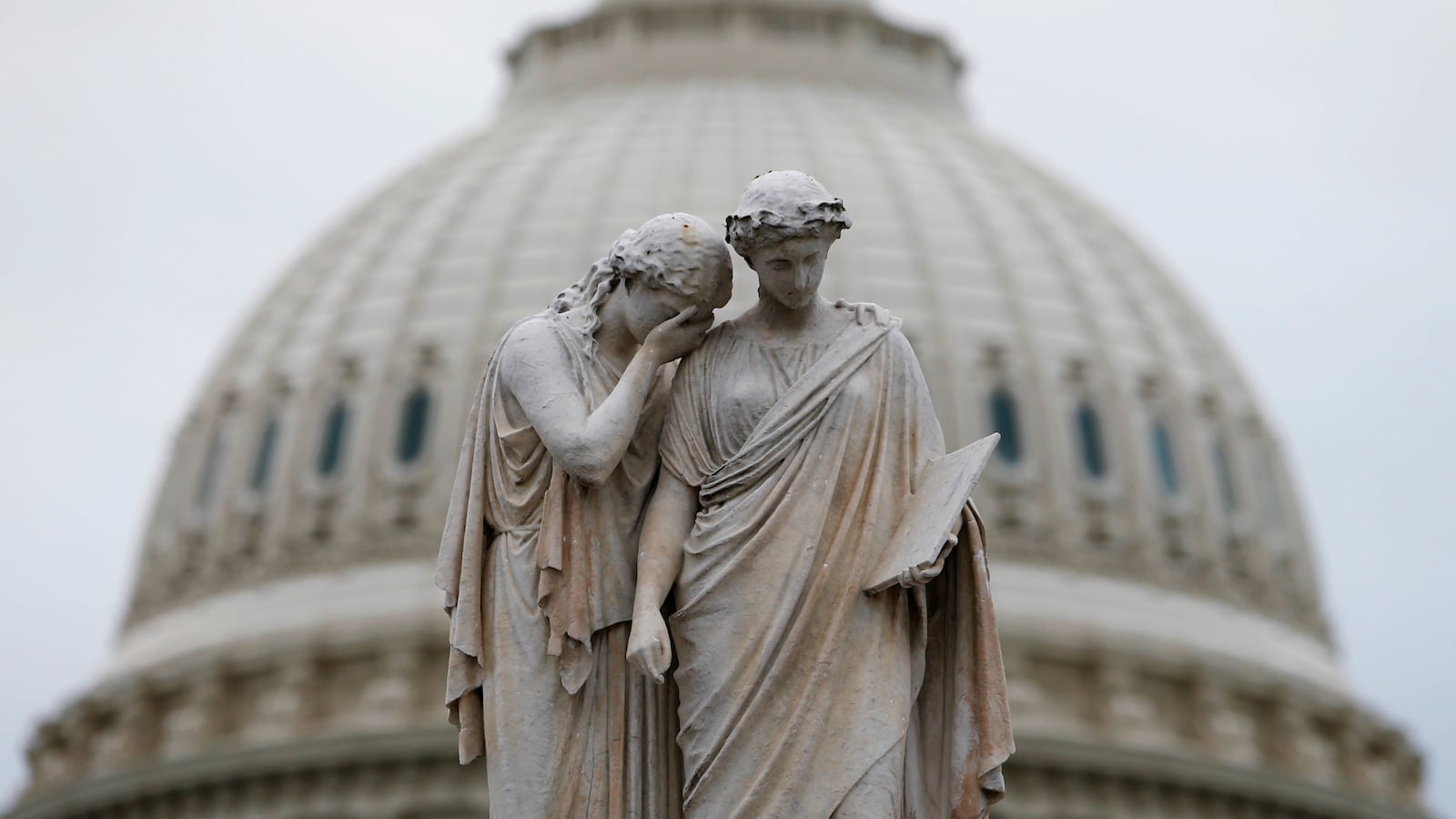The growing income inequality in the United States since the 1970s is a source of great concern for many Americans. The historic notion that, in America, upward mobility is in the hands of the individual increasingly seems more fiction than reality. Many factors have contributed to this state of affairs, but one important one is growing inequality in education. Some of the responsibility for this state of affairs rests with the Supreme Court. Although the Supreme Court building declares “Equal Justice Under Law,” on this issue, the Court has failed to live up to its own promise.

The state of public education in the United States is widely acknowledged to be little short of disastrous. This is due, in no small part, to a relatively obscure 1973 decision of the U.S. Supreme Court. In a hotly contested 5-to-4 decision in San Antonio Independent School District v. Rodriguez, the Court held that there is no constitutional right to an equal education. In so doing, it declined to address a fundamental problem that has undermined American public education ever since.
The problem, quite simply, is inequality of resources. There is a strong, though not perfect, correlation between dollars spent per pupil and student education outcomes (measured by such factors as dropout rates, high school graduation rates, scores on standardized tests, etc.). The correlation is especially robust in the lower grades, when students are in their formative years. According to a recent study, for example, a 10 percent increase in per pupil expenditures generates a 4 percent increase in graduation rates.
If disparities in per pupil expenditures were small, this might not be a big deal. But the reality is much more dramatic. My own state of Illinois is more or less in the middle of the pack among all states in per pupil expenditures. But the variation across the state is staggering. The average per pupil expenditure for elementary school students in Illinois is approximately $11,600 per year.
Per pupil expenditures across the state’s elementary schools, however, range from a high of $28,500 to a low of $6,400. The state is therefore spending more than four times as much per pupil on students in some districts than it is spending on students in other districts. These are huge variations. Unsurprisingly, these variations in per pupil expenditures affect the quality of education—and the lives—of these children forever.
Why on earth would we do such a thing? The answer is simple. Most states provide a modest amount of state funds to each school district—enough, in theory, to provide each child with a minimal—otherwise known as “adequate”—education. They then permit each school district to use its local property tax to raise additional funds as they choose. This is known as “local control.”
Of course, if each school district in the state had an equal capacity to raise educational funds through its property tax, this system might make sense. But that has no relationship to reality. Instead, school districts have vastly different capacities to generate revenue from the property tax, and this correlates in significant degree with the wealth, class, and race of the residents of each district.
Predictably, school districts with wealthy residents spend much more per student on average than school districts with poor residents. This “local control” is backed up by the power of the state, which effectively reinforces the advantages of wealth and perpetuates the disadvantages of poverty from one generation to the next. The system exacerbates inequality and defeats the notion that in America every person has a fair chance to succeed.
It would be bad enough if individuals used their private wealth to send their privileged children to private schools to ensure that they never have to compete with others on an equal basis. But here it is the state itself that facilitates this discrimination.
Is this constitutional? The Supreme Court considered this question in 1973 in Rodriguez. The case involved the constitutionality of Texas’s school financing scheme, which was similar to the one used today in Illinois and in almost every state in the nation. At issue in Rodriguez was a system that resulted in some school districts in the state spending twice as much per pupil as others. Note how the problem has worsened over the past four decades. In Illinois today, some districts spend more than four times as much per pupil as others.
A group of parents from a poor district challenged San Antonio’s school-funding system, but in a 5-to-4 decision, the Court rejected the constitutional challenge. In his dissenting opinion, Justice Thurgood Marshall argued that inequalities in the provision of public education must be viewed skeptically. This is so, he argued, because of education’s central importance in shaping the lives of our citizens and because there is a direct “relationship between education” and the ability of citizens to participate fully and effectively in “the political process.”
As the Supreme Court had observed unanimously two decades earlier in Brown v. Board of Education, “education is perhaps the most important function of state and local government. ... It is the very foundation of good citizenship” and “it is a principal instrument in awakening the child to cultural values, in preparing him for later professional training, and in helping him to adjust normally to his environment.” It is “doubtful,” the Court added in Brown, “that any child may reasonably be expected to succeed in life if he is denied the opportunity of an education,” and “where the state has undertaken to provide” that opportunity,” it “must be made available to all on equal terms.”
In rejecting this view, the five members of the majority maintained that, “whatever merit” there might be in a constitutional challenge if a state’s system “occasioned an absolute denial of educational opportunities to any of its children,” there is no constitutional issue when there are “only relative differences in spending levels” and where the state provides each child with “an opportunity to acquire” at least “the basic minimal skills necessary” to function in society. The inequality, in other words, was not “a sufficient basis for striking down” the state’s funding system.
Rodriguez was a terrible decision at the time it was decided, and it remains an even more terrible decision today. Although a few state legislatures and state courts have reformed their state’s funding system to promote greater equality in public education, the situation in the vast majority of the states has gotten only worse with time.
Justice Marshall had it right in his dissenting opinion: “The majority’s holding can only be seen as a retreat from our historic commitment to equality of educational opportunity. ... In my judgment, the right of every American to an equal start in life, so far as the provision of a state service as important as education is concerned, is far too vital to permit state discrimination” of this sort. Marshall rejected the majority’s assertion that it should rest with the political process to deal with this issue, noting that that process has “proved singularly unsuited to the task of providing a remedy for this discrimination.” Echoing Brown, Marshall concluded that it is inappropriate to leave this issue to “the hope of an ultimate ‘political’ solution sometime in the indefinite future while, in the meantime, countless children unjustifiably receive inferior educations that ‘may affect their hearts and minds in a way unlikely ever to be undone.’”
And here we are 40 years later, and the legacy of the Supreme Court’s failure in Rodriguez plagues our nation to this day.






